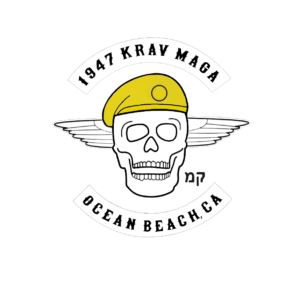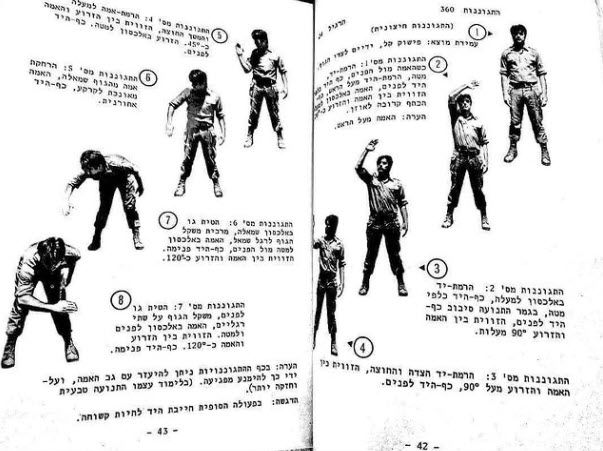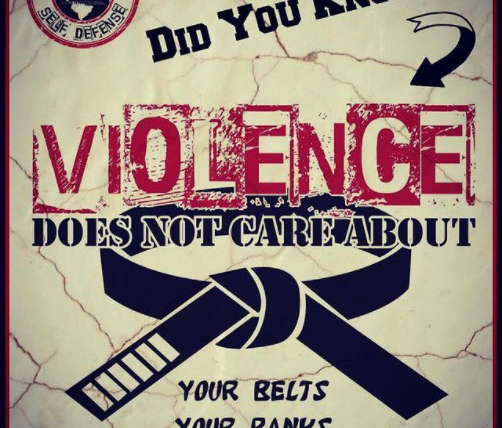Techniques
Are prescribed methods of mental method of thinking and mechanical motion of the human body to accomplish something. In Martial Arts, techniques are considered to be a method of driving a punch, a kick, a chop, and a method of blocking either, execution of a choke, an armbar, a headlock, a windpipe crush, a squeeze or a jab of a sensitive pressure point as well and the physical prevention or escape from these methods.
1947 Krav Maga Techniques are selected methods of Punching/Kicking/Striking, and grappling in many angles, that are learned to be executed in the most efficient and effective way to support challenging attacks, and to test defenses that work. Defenses from a tactical point of view are methods to stop an attack, and prevent further attempts to attack, from the same individual in the near future.
Principles
A principle is a law or rule that has to be, or usually is to be followed, or can be desirably followed, such as the laws observed in nature or the way that a system is constructed. The principles of such a system are understood by its users as the essential characteristics of the system, or reflecting system’s designed purpose, and the effective operation or use of which would be impossible if any one of the principles was to be ignored.
In Krav Maga the objective of self defense training is to give the students, in minimum training time, the ability to instinctively identify a dangerous potential of upcoming events that jeopardize the physical well being of the individual, caused by another human being that has two arms and two legs, or multiple of such potential attackers, and be able to foil any attempt of harm from a Hand or Kick reach, or a small blade or club-like weapon.
The components of the Training System of 1947 Krav Maga are:
- Training time: Students must be trained. Training time is utilized to give maximum learning possible with the elements that can give better chance of survival in priority and progressively according to the building blocks of the whole picture.
- Prioritization: Prioritization through the process of learning and learning how to prioritize in order to foil any danger.
- Efficiency: Ability to achieve maximum benefit from minimum training time recommended for effectiveness. Efficiency is stressed in each component of the process to minimize reaction time to the danger and minimize the time it takes to neutralize the danger. Comprehensive training for each part of the whole picture
Reading the objective of the 1947 Krav Maga Training System, we can extrapolate the principles and components of the method of preventing a threat to materialize. Students learn to identify danger, and learn to prioritize what is the most imminent danger, in any possible scenario according to the principles of the capabilities of the human body.
This is done by putting the student in the attacker’s hat and showing them the most efficient ways to harm another person, and teaching him the most desirable sequential motion to attack another human that promote efficiency and therefore enables the student to attack fast, and control or inflict damage to the opponent, making it hard to the opponent to timely react and/or foil the attempt.
The method of attack or counter attack is to apply force on a pressure point that cuts the opponent’s train of thought, and therefore his action of attack, by inflicting severe pain on one of his nerves, or keeping his body natural nervous system or physical being limited from attacking.
Students acquire a solid understanding of the Human Body Useful Major Pressure Points that are easily accessible during a confrontation. Students then learn the best most efficient approach for response and defense for a threat by prioritizing.
Techniques learned in 1947 Krav Maga are limited to any technique that can reasonably be executed by a trained or untrained assailant. 1947 Krav Maga strives to examine any technique available in the market. However since, over the last 4,000 humans all over the world attempted to find any method of attack in any angle, it is assumed to explore to the max, so there are probably no significant unexplored methods to date.
However since Krav Maga is not technique driven system, principles are learned and techniques are names in plain language describing the action of the technique. Many techniques that are used for sports martial arts are not taught since the assumption is that if you learn a major principle of kicking or punching in few angles, you can apply it to any other angle on your own if required. As from grappling techniques, this applies as well, as if you learn the principles of restraining, and escapes from restraining attempts you can apply them to any angle of approach.
The advantage of teaching students principles over techniques is that students understand each component of the system and have the tools to solve problems in the field. After learning the foundations of 1947 Krav Maga, training includes sufficient live exercise to include all possible scenarios of attack and defense. However stress is put on timing of defenses as much as timing of attacks.
Since there is a point where it might be too late to respond, the emphasis is to react on time without hesitation rather than find a solution for a problem that is a result of a less skilled opponent that might give you a second chance. Krav Maga takes the approach that there is no second chance.
Some of the attack techniques learned in Krav Maga are learned just for the purpose to teach students how to defend against such attacks and make them familiar in what to expect. In reality some of these attacks will never materialize when confronted with a 1947 Krav Maga trained student who will stop the opponent before he/she would ever get close to execute such technique.
Krav Maga assumes a potential opponent would be most efficient, and therefore respond to the most efficient attack from any angle of approach, and counter attacks at the same time. With this approach 1947 Krav Maga students can not go wrong, since they are trained to counter attack immediately after responding to the opponent’s best capabilities.
If the opponent behaved in a way that is not optimal as expected, he would have been cut short on his way to accomplish his mission, since his method is less efficient than the defensive method to the most efficient attack.
One most important principle of Krav Maga is as its founder used to say “Do not get hurt” If you get hurt your chances diminish as your brain is preoccupied with your limiting condition instead of stopping your attacker. If you get hurt badly, your brain might stop working altogether. This principles calls for finding the most efficient way to identify, timely respond and neutralize the danger according to the need knowing all your options and limiting all your opponent’s options.
Krav Maga is efficient and therefore simple. It is not efficient because it is simple. If you see someone that is doing a kick, a punch, a strike, a finger jab, a tear, a defense, an armbar, a head lock, an escape, demonstrating solo, or on an obliging training partner, or obliging student, in a mechanical fashion that reminds you of Krav Maga, there is no guarantee that he is teaching or using Krav Maga unless he is using all Krav Maga Principles with this technique.
You have to understand the whole picture and be able to identify and manipulate the whole picture in order to know Krav Maga, and to Know what is Krav Maga and what is Not Krav Maga




